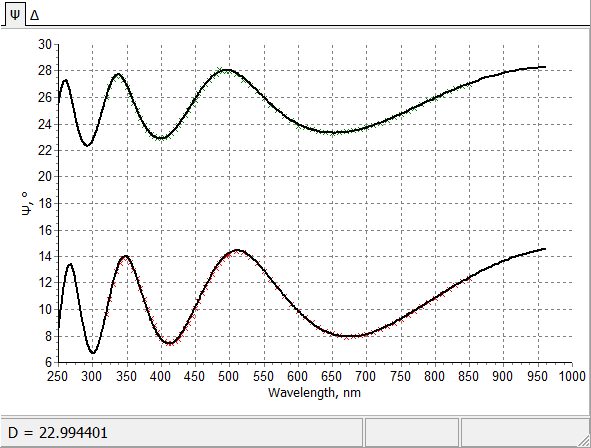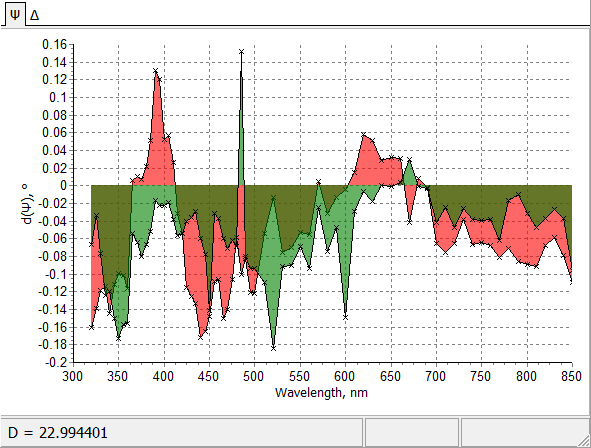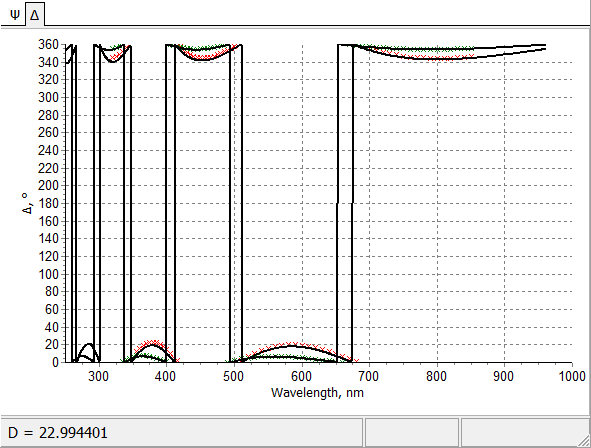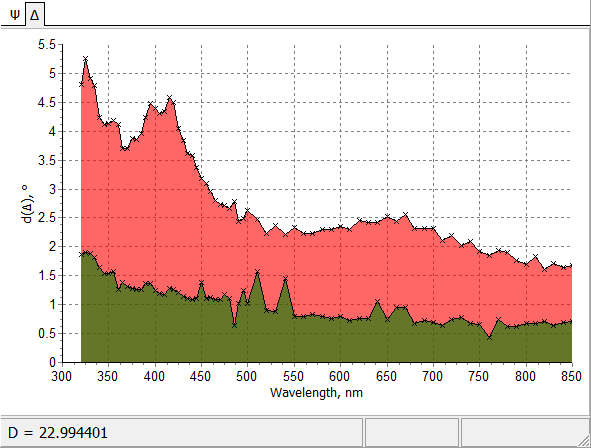| Partial Discrepancies window displays the discrepancies between the loaded measurement data and the corresponding model spectral characteristics. Various partial discrepancies (for example, discrepancies for ellipsometric angles Psi and Delta) are displayed separately. This option is convenient, especially in the case of characterization on the basis of ellipsometric measurements. | |
 Intermediate fitting of measured angle Psi by model Psi angle. Intermediate fitting of measured angle Psi by model Psi angle. |

Partial Discrepancies calculated for Psi angle. |
|
Intermediate fitting of measured angle Delta by model Delta angle. Visually the fitting looks good. Actually it is difficult to notice deviations because of the large scale: from 0 to 360 degrees. Partial Discrepancies will help to visualize deviations. |
Partial Discrepancies calculated for Delta angle. Deviations between measured and model data are clearly observed. These deviations reveal deficiency of applied thin film model. |
OptiLayer provides user-friendly interface and a variety of examples allowing even a beginner to effectively start to design and characterize optical coatings. Read more…
Comprehensive manual in PDF format and e-mail support help you at each step of your work with OptiLayer.
If you are already an experienced user, OptiLayer gives your almost unlimited opportunities in solving all problems arising in design-production chain. Visit our publications page.
Look our video examples at YouTube
OptiLayer videos are available here:
Overview of Design/Analysis options of OptiLayer and overview of Characterization/Reverse Engineering options.
The videos were presented at the joint Agilent/OptiLayer webinar.


